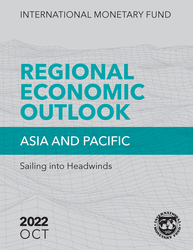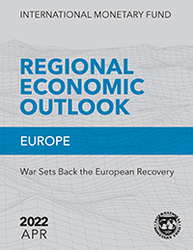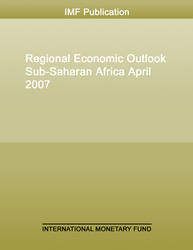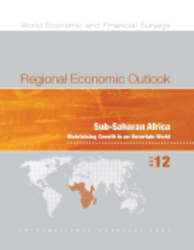
Regional Economic Outlook: Asia and the Pacific, October 2022: Sailing into Headwinds
After the strong rebound of 6.5 percent posted in 2021, growth in Asia and Pacific is expected to moderate to 4.0 percent in 2022 amid an uncertain global environment and rise to 4.3 percent in 2023.
READ MORE...
Publication date: October 2022
ISBN: 9798400220517
$20.00
Add to Cart by clicking price of the language and format you'd like to purchase
Available Languages and Formats
| English | |||
| Hindi |
Prices in red indicate formats that are not yet available but are forthcoming.
Topics covered in this book
This title contains information about the following subjects.
Click on a subject if you would like to see other titles with the same subjects.
Economics- Macroeconomics , International - Economics , Asia , ASEAN , COVID-19 , corporate debt , digitalization , labor , geoeconomic fragmentation , trade policy , inflation
Summary
After the strong rebound of 6.5 percent posted in 2021, growth in Asia and Pacific is expected to moderate to 4.0 percent in 2022 amid an uncertain global environment and rise to 4.3 percent in 2023. Inflation has risen above most central bank targets, but is expected to peak in late 2022. As the effects of the pandemic wane, the region faces new headwinds from global financial tightening and an expected slowdown of external demand. While Asia remains a relative bright spot in an increasingly lethargic global economy, it is expected to expand at a rate that is well below the average rate of 5½ percent seen over the preceding two decades. Policy support is gradually being withdrawn as inflation rises and idle capacity is utilized, but monetary policy should be ready to tighten faster if the rise in core inflation turns out to be more persistent. The region’s rising public debt levels call for continued fiscal consolidation, so interventions to mitigate global food and energy shocks should be well targeted, temporary, and budget neutral. Structural reforms are needed to boost growth and mitigate the scarring that is expected from the pandemic, especially making up for lost schooling through investments in education and training, promoting diversification, addressing the debt overhang from the pandemic, and harnessing digitalization. Strong multilateralism—including through international organizations, the Group of Twenty and regional processes—will be needed to mitigate geo-economic fragmentation and deliver much needed progress on climate change commitments.
Copyright © 2010 - 2025
Powered by:
AIDC



